- Home
- Richard F. Weyand
GALACTIC SURVEY (COLONY Book 3)
GALACTIC SURVEY (COLONY Book 3) Read online
Books in the COLONY Series
QUANT
ARCADIA
GALACTIC SURVEY
Books in the EMPIRE Series
by Richard F. Weyand:
EMPIRE: Reformer
EMPIRE: Usurper
EMPIRE: Tyrant
EMPIRE: Commander
EMPIRE: Warlord
EMPIRE: Conqueror
by Stephanie Osborn:
EMPIRE: Imperial Police
EMPIRE: Imperial Detective
EMPIRE: Imperial Inspector
EMPIRE: Section Six
by Richard F. Weyand:
EMPIRE: Intervention
EMPIRE: Investigation
EMPIRE: Succession
EMPIRE: Renewal
EMPIRE: Resistance
EMPIRE: Resurgence
Books in the Childers Universe
by Richard F. Weyand:
Childers
Childers: Absurd Proposals
Galactic Mail: Revolution
A Charter For The Commonwealth
Campbell: The Problem With Bliss
by Stephanie Osborn:
Campbell: The Sigurdsen Incident
GALACTIC SURVEY
A Colony Story
by
RICHARD F. WEYAND
Copyright 2021 by Richard F. Weyand
All Rights Reserved
ISBN 978-1-954903-04-3
Printed in the United States of America
Cover Credits
Cover Art: Paola Giari and Luca Oleastri,
www.rotwangstudio.com
Back Cover Photo: Oleg Volk
Many thanks to
王睿
for verifying Chinese cultural accuracy.
Published by Weyand Associates, Inc.
Bloomington, Indiana, USA
August 2021
CONTENTS
The Propulsion Problem
The Destination Problem
Propulsion
More Missing Data
Interstellar
Integration
Revelation
The First Hyperspace Ship
Motivation
Jessica’s Play
Testing The Hyperspace Ship
Manned Interstellar
The Search Begins
First Results
Kicking Off The Big Project
Getting Under Way
All The Playtoys
Mundanities And Vision
Details, Details, Details
About Amber
About Earthsea
The Prime Minister
Construction Plan
Mission To Earthsea
Construction Zone
Arrival On Earthsea
The Deal
Return To Arcadia
First Meeting
Cheese And QE Radio
The Chen Step In
Intermezzo
Mission To Amber
Pushback
The Star Runner
Return Of The RDF Satellites
Deal
Quant
Author’s Afterword
The Propulsion Problem
Chen ChaoLi reviewed her project plan before the staff meeting. The biggest problem with her project plan was that she was soon going to fall off the end of it.
They could now routinely make transition to hyperspace and back with the probe they had. Instrumentation readings had allowed them to fine-tune the cooling issues with the hyperspace field generator. They had a heat map and a graph of the heat over time for the transitions they had made, and that allowed getting cooling only where it was needed when it was needed.
They had also learned they could reduce the hyperspace field strength while the probe was in hyperspace and still protect the probe from the corrosive effect hyperspace had on ordinary matter. Reducing the field strength to only ten percent or so of the field they needed for the transition had also reduced the problems cooling the hyperspace field generator.
Finally, stress monitors on the structure of the probe had given them more information about how close to the planet they could transition the probe without gravitational shear forces tearing the probe apart. They no longer needed to have the probe spend four days traveling away from Arcadia to get to a safe spot to transition. They were down to less than a day.
Now if they could only figure out how to move the damn thing once it was in hyperspace. Without that, there was no hyperspace drive.
And without a hyperspace drive, there was no project plan.
Chen JieMin, ChaoLi’s husband and the theoretical lead on the hyperspace project, was also preparing for the staff meeting. His hyperspace mathematics team had made a lot of progress tightening up the mathematics using the data the probe was bringing back every trip.
JieMin had built up a hyperspace mathematics team around himself over the last ten years. He had worked initially with Karl Boortz, the head of the University of Arcadia mathematics department, and then with Boortz’s replacement when Boortz retired, Ivan Volodin. Together, they had sought out any children in Arcadia with the mathematics skills to contribute to the program.
A hundred and twenty years after the founding of the colony, the population was approaching twenty million people, over half of them under sixteen years old. Large families and marrying young had combined to provide such a large population pool, and JieMin, Boortz, and Volodin had found several wild talents to whom they offered full scholarships to the hyperspace math program.
That long-term investment was paying off now, and JieMin had a seasoned team of young applied mathematicians to help advance the mathematical formalism of hyperspace. They were developing a very good model of what hyperspace was and what it wasn’t, how it worked and how they could use it.
Karl Huenemann, the engineering lead on the hyperspace project, was also preparing for the staff meeting. With the data coming in from the probe trips into hyperspace and back, his team had been busy doing what engineers do for a living: cost-reduce, optimize, simplify. They were ready to go with a simpler, more reliable, reduced-cost probe design.
This probe would be able to transfer into and out of hyperspace with much less energy expenditure and risk than the existing design. They could get it into hyperspace and get it back any time they wanted.
The one thing they couldn’t figure out was how to make the probe move once it got there.
“All right, gentlemen,” ChaoLi said when Huenemann and JieMin were seated. “Let’s get started.”
She opened her project book to her notes for the meeting.
“I guess first up is current status. Go ahead, JieMin.”
JieMin summarized the progress the hyperspace math group had made in refining their formalism using the data from the probe. They had incorporated all the latest data, and, from their mathematics, could now replicate the data. That is, their math was predictive of the data.
“Excellent,” ChaoLi said. “Thank you. All right, Karl. You’re up.”
Huenemann summarized the engineering progress. The optimization they had done on the in-progress design of a new generation of probe to replace the original probe, which was getting pretty long in the tooth by this point. They would have to replace it soon, and the engineering team was pretty close to finalizing the next-generation device. The next-generation device would also include a cockpit, to be used first for animal testing, then for human occupancy.
“Excellent,” ChaoLi said.
She consulted her notes.
“We are now left to consider the future, gentlemen. All this progress is fine if what we are aiming for is to be able to transition probes back and forth to hyperspace. What it doe
sn’t solve is how to get the probe to exit hyperspace somewhere other than where it went in. The floor is open for ideas.”
“Well, that has always been the problem, ChaoLi,” Huenemann said. “We’ve considered a number of alternatives there. A reaction drive like a rocket is impossible, because the reaction mass will simply bounce off the hyperspace field and fill up the field envelope with its exhaust. We can’t use some kind of impeller outside the field, because, even if we could figure out how to have anything connected to the probe outside the hyperspace field, anything outside the field will be destroyed by hyperspace. It’s like trying to row a boat in a lake of acid. The oars will disintegrate. The only contact we have with hyperspace is the hyperspace field itself.”
JieMin started at Huenemann’s last sentence, and his eyes were unfocused as he stared at the conference table.
“JieMin?” ChaoLi asked.
JieMin held up a finger – his ‘wait a minute’ signal – and ChaoLi was content to wait. When Huenemann looked like he was going to say something, ChaoLi held up a quelling hand. After a couple of minutes, JieMin stirred.
“There is a possibility, I think,” he said. “Karl said it correctly. The only contact we have with hyperspace is the field itself. But there is a possibility there, I think. We can modulate the strength of the field differently in different places.”
“How does that result in a drive, JieMin?” ChaoLi asked.
“Consider. We know that hyperspace exerts a pressure on the hyperspace field. The size of the field envelope shrinks when the probe enters hyperspace. It is this pressure that dictates how strong of a field we must maintain while in hyperspace. The field envelope must remain larger than the probe itself.”
“Right. I’m with you so far,” ChaoLi said, and Huenemann nodded. Leaving the hyperspace generator on once in hyperspace had been a source of contention between JieMin and Huenemann at the beginning of the project.
“All right. So if we made the hyperspace field have a variable strength along its length – concentric rings of higher field strength, like rings on a cat’s tail – then the hyperspace field would be ribbed along its length from the pressure.”
“OK. I can see that.”
“Hyperspace is not solid, but the energy density has a viscosity of sorts. If we have those stronger portions flow from the front of the field to the back – make the field strength ripple along the field – that should result in a thrust against hyperspace.”
“Fuck. That’s brilliant,” Huenemann said.
ChaoLi gave him a sharp glance, and he shrugged.
“JieMin,” he said, “can we make the areas of stronger field be a spiral, and rotate it like a screw?”
JieMin thought about it a minute.
“Yes, I think so. But if you rotate it like a screw, the probe will counter-rotate.”
“Perfect.”
“What are you thinking, Karl?” ChaoLi asked.
Huenemann was in his element now, and he was animated as he spoke.
“If we build large, human-occupied ships, one problem is weightlessness. Some people can handle it, some can’t. We know that from our shuttle experience. And, even for those who can handle it, medium- to long-term it’s a problem. Bone loss, muscle atrophy, all that sort of thing. But if we make a cylindrical ship where the humans live in the outer portion of the cylinder, we can get apparent gravity by spinning the ship. So we do the screw thing until we get the ship spinning for the gravity we want, then we do the ripple thing the rest of the trip. Solves both problems, propulsion and gravity.”
ChaoLi looked at JieMin, and he was nodding as Huenemann finished.
“Yes, that would work,” JieMin said. “It will take some serious modifications to the hyperspace field generator, but I think we can do all of that. We’ll have to work out the details, Karl.”
“Of course. But now we have a direction. That is, if you approve, ChaoLi.”
“Solving both problems at once? Of course, I approve. It seems to me, though, that the ripple effect should be first. Let’s see if we can make the probe come out somewhere other than where it went in. That would tell us a lot.”
“Yes,” JieMin said. “It would give us some better numbers on the ratio of distances between corresponding points in hyperspace and normal space. Our multiplier. We’re guessing right now.”
Huenemann clapped his hands.
“All right! Now we’re getting somewhere.”
“Somewhere indeed,” ChaoLi said. “That of course is the other question. If we can solve the propulsion problem, and build hyperspace-capable ships, where do we go?”
“To Earth, I imagine,” Huenemann said. “And to the other colonies.”
“Which are where, Karl?” ChaoLi asked.
“Yeah. That’s a problem, isn’t it?” Huenemann said.
“I think we can locate the first two,” JieMin said. “We have the records of the viewscreens from the passenger containers the original colonists came here in. So there are views in multiple directions for the first two colony stops. We should be able to locate them from star parallax and location. Within a hundred light-years or so. Perhaps less. The other twenty-one colonies could be anywhere.”
“That’s our next problem, then,” ChaoLi said. “Figuring out how to find them.”
“There may be some documentation of them in the archives. If not, we’re going to need some sort of exoplanet scanner,” JieMin said.
“We have plans for the ones the Colony Headquarters used to find the colony planets,” Huenemann said. “But there are a lot of possible planets. We can’t just scan planets and say ‘Oh, there’s a colony.’”
“No, we’ll have to do some sort of galactic survey to find them,” ChaoLi said. “That’s a longer-term problem, but it’s something you should be working on, JieMin.”
ChaoLi checked her notes for the meeting.
“All right. That’s all I had this week. Thank you, gentlemen.”
The Destination Problem
When JieMin got back to his office in the Chen Hall of Science, he called his hyperspace math team together. He explained the ideas for what he was thinking of as the ripple drive and the screw drive to them and set them to the task of working out a first pass of how to modulate the hyperspace field.
JieMin wanted to take on the destination problem.
The first step was to locate those other two colonies. JieMin got in touch with the head of the astronomy department, and set up a meeting for that afternoon.
Aaron Barkley, the head of the astronomy department, knew Chen JieMin. Everyone in the Chen Hall of Science, and most everyone in the university, knew the famous mathematician. In Barkley’s case, though, Chen JieMin had occasionally helped them out with thorny math problems that came up in their astronomy work. So Barkley was happy to meet with him.
The meeting was, at JieMin’s request, in JieMin’s office.
“JieMin! How are you?” Barkley asked.
“Very good, Aaron. Come in. Sit down.”
JieMin waved to a guest chair and Barkley sat down.
“What can I do for you today?” Barkley asked.
“I have a little problem for you, Aaron.”
“Indeed. For us? Well, maybe for once we can return the favor for the help you’ve given us over the years. What have you got?”
“We want to locate the first two colonies dropped off by the interstellar transporter a hundred and twenty years ago. Amber and Earthsea.”
“My understanding was that we didn’t know where the other colonies were, JieMin.”
“We don’t, Aaron. At least, not officially. But I’ve been looking through the archives, and I’ve found the viewscreen recordings for the passenger containers that brought the original colonists to Arcadia.”
JieMin gestured to the three-dimensional display in the rear portion of his office. A section of the Orion Arm of the Milky Way appeared in the display.
“The Earth, of course, is here,” JieMin said, po
inting. “And Arcadia is here, about three thousand light-years away.”
Barkley nodded.
“We can assume, I think, that the other colonies were similarly separated,” JieMin said. “That is, there was more emphasis placed on having very congenial planets for colonization than that they were close to Earth.”
“Yes, I’ve heard that theory. Makes sense to me.”
“Now, the transporter dropped off twenty-four colonies. That was the plan, at least. The Arcadia colonists were dropped off third. The viewscreens of the passenger containers captured the sky above each of the first two drop-offs, and the multiple containers were pointed in different directions. Someone thought to preserve those viewscreen recordings, and I found them in the archives.”
Images of the viewscreen recordings began to cycle in the display, about one every three seconds.
“You did? Why, that’s extraordinary, JieMin,” Barkley said. “I had no idea we had anything of the kind.”
“What I need you to do for me, Aaron, is to find out where those colonies are, from a parallax analysis, from those multiple views. Do you think you can do that?”
“Of course. Why, if I had known we had those images, I daresay we would have done it already, just because.”
Barkley watched the viewscreen images cycle in the display. He was clearly anxious to get started.
“Excellent. I would appreciate it, Aaron.”
Barkley turned from the display to JieMin.
“You planning on sending someone to those colonies, JieMin?”
“Eventually, Aaron. That’s the plan. Eventually.”
Barkley turned back to the display.
“Wouldn’t that be something,” he said.
With the astronomy department dispatched on the problem of locating Amber and Earthsea, JieMin turned his attention to the rest of the colonies, the transporter’s drop-offs after Arcadia.
In the library’s archives, JieMin went into the Colony Headquarters records. They had all the records up to the time the transporter had left Earth. Literally everything. Recordings of meetings. Documents of all sorts. Shuttle schedules. Supplies listings. Who the suppliers were. Delivery schedules. It went on and on.

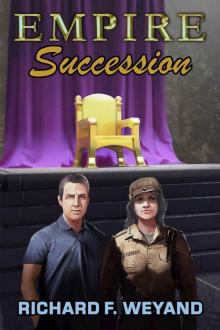 EMPIRE: Succession
EMPIRE: Succession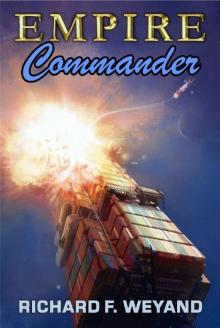 Commander
Commander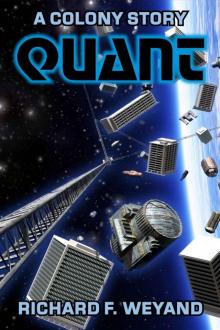 QUANT (COLONY Book 1)
QUANT (COLONY Book 1)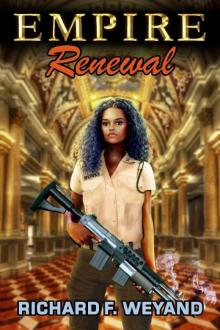 EMPIRE: Renewal
EMPIRE: Renewal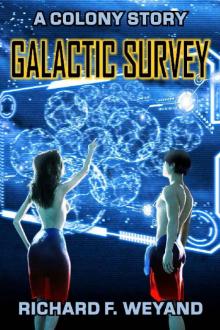 GALACTIC SURVEY (COLONY Book 3)
GALACTIC SURVEY (COLONY Book 3)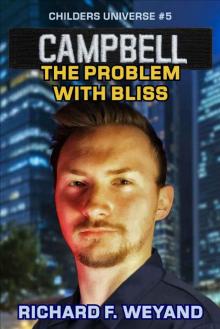 Campbell- The Problem With Bliss
Campbell- The Problem With Bliss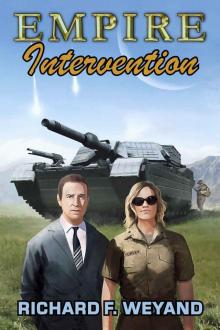 EMPIRE: Intervention (EMPIRE SERIES Book 13)
EMPIRE: Intervention (EMPIRE SERIES Book 13)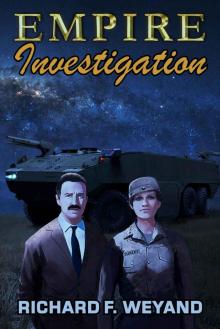 EMPIRE: Investigation
EMPIRE: Investigation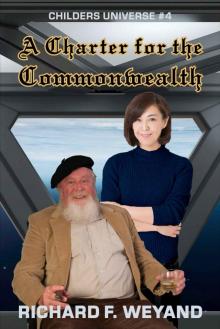 A Charter for the Commonwealth
A Charter for the Commonwealth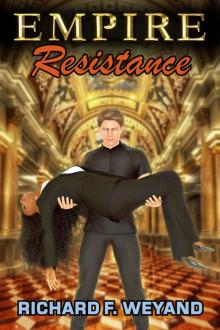 EMPIRE: Resistance
EMPIRE: Resistance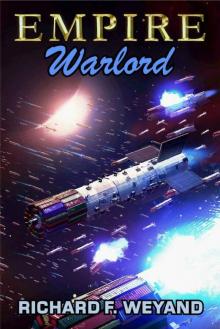 EMPIRE: Warlord (EMPIRE SERIES Book 5)
EMPIRE: Warlord (EMPIRE SERIES Book 5)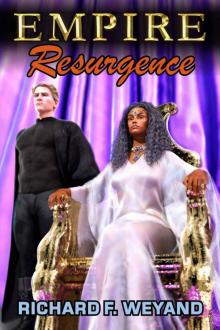 EMPIRE: Resurgence
EMPIRE: Resurgence EMPIRE: Conqueror (EMPIRE SERIES Book 6)
EMPIRE: Conqueror (EMPIRE SERIES Book 6)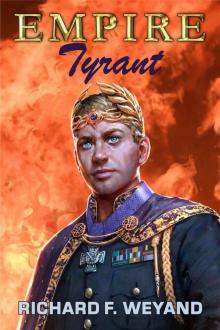 Tyrant
Tyrant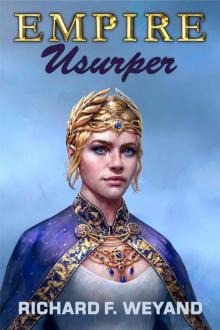 Usurper
Usurper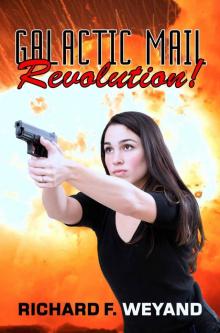 Galactic Mail: Revolution! (Childers Universe Book 3)
Galactic Mail: Revolution! (Childers Universe Book 3)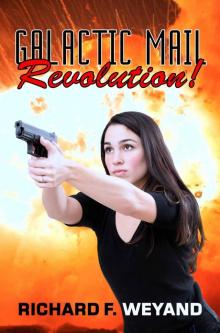 Galactic Mail_Revolution!
Galactic Mail_Revolution!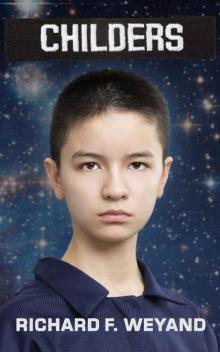 Childers
Childers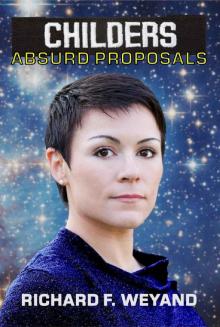 CHILDERS_Absurd Proposals
CHILDERS_Absurd Proposals